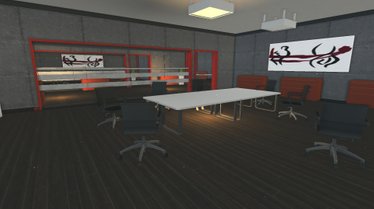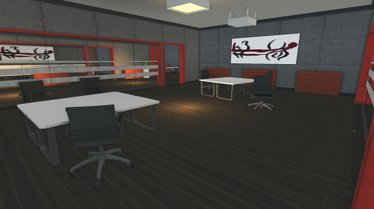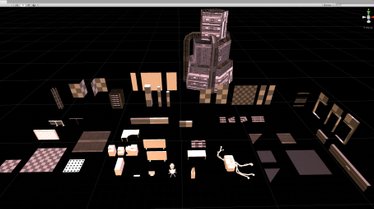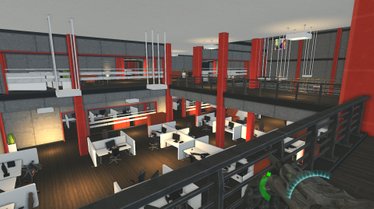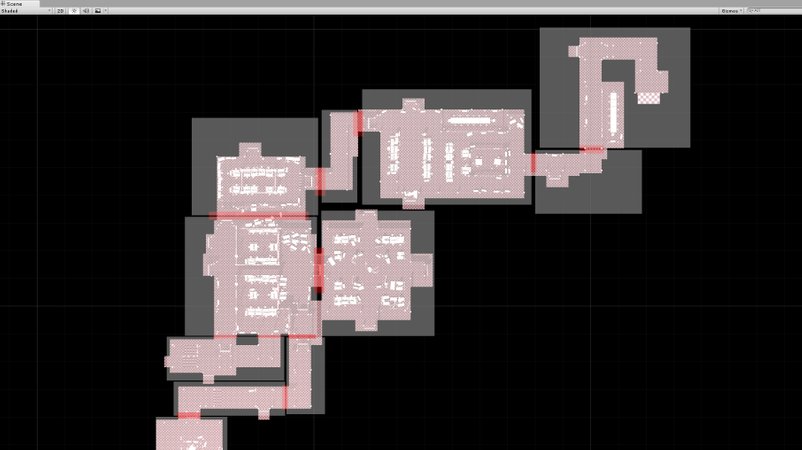HENRIK SANDIN
Senior Level Designer
Level Design & Game Design
Machina
Screenshots
(Level designing with portal culling)
Early in this project, we knew the game would require portal culling to be able to run smooth. After I finished designing the first level, I still had some rooms that had a bit low framerate. The main solution I used was to create more hallways that had 90° turns, this helped the map to be more optimized. A potential problem with this solution was that it would feel unnatural and boring. It still worked out fine because we had a lot of office environment and these kind of hallways were very natural in that setting.
In Machina you play as a cyborg named agent X10. The AI has gone berserk in the Machina Corp. Agent X10s mission is to terminate the Machina Corp Mainframe and destroy all the corrupted rogue AIs he encounters.
(Lighting before)
(Lighting after)
Until the last week of the project, we didn't know if we were going to have shadows in the game or not. In the end, we decided to skip them because we were unsure if the game could have a decent framerate with them. The problem that was created from this was that we still wanted realistic lighting, thus we solved it with placing lights where they naturally wouldn't cast shadows on the objects. In some cases, we even moved the props away from the lighting.
(Devloper set in unity)
In the preproduction phase of the project us level designers and the environment artist, made a list of everything we wanted in the game.
On the list, we had a lot of props and smaller items. We made the choice to prioritize creating the walls, floor, roof and big props that infulenced gameplay primarily, before making the smaller one.
(Room A)
(Room B)
We had an office environment setting for the first two levels. A issue that occurred was that a lot of the areas on the maps looked very similar. Thus, there was some difficulty navigating on the maps. Since we knew the Artists wouldn't have time to create a lot of different settings, we had to make a more distinct design. The main solution we tried, was to create a lot of rooms that was going to have a unique look to them, with only our layout design.
(Last level as a environment fight)
When I created the last level I wanted to use all of the mechanics we had in the game. Thus, I created set spots for certain events to take place, like defend missions where the mainframe AI sends waves of enemies. Since this level was just going to be a huge room with a lot of vertical gameplay, I first thought it would be quick and easy to build. A big factor that made it harder, was that at certain places it took to long to get to a different location, so I had to improve the accessibility for the player from a lot different positions. What I learned was that it's a lot harder to design a big playing field that has a fluid flow. Compared to designing chunks of a level and putting them together.
(Weapon upgrades placements on last level)
A huge problem I had with the last level was placements for weapon uppgrades. When I placed them out on the level, the player would run and get all of the upgrades before starting an event.
I had no way of spawning in the upgrades, a quick solution was to give all of the pickups to the player before entering the room. I wasn't fully satisfied with this but it was still positively received from the players.
My contributions:
Specification:
Tools:
- S
School project: 10 weeks(half time)
Level editor: Unity 3D
Engine: In-house
Team size: 11
2 Level Designers
3 Artists
6 Programmers
- L
Game design
Export tools - scripting
Level dressing
Level lighting
Enemy balancing
Difficulty balancing
Quality assurance
Collision models
- U
XML
Adobe Photoshop
Autodesk Maya
Notepad ++
In-house tools
